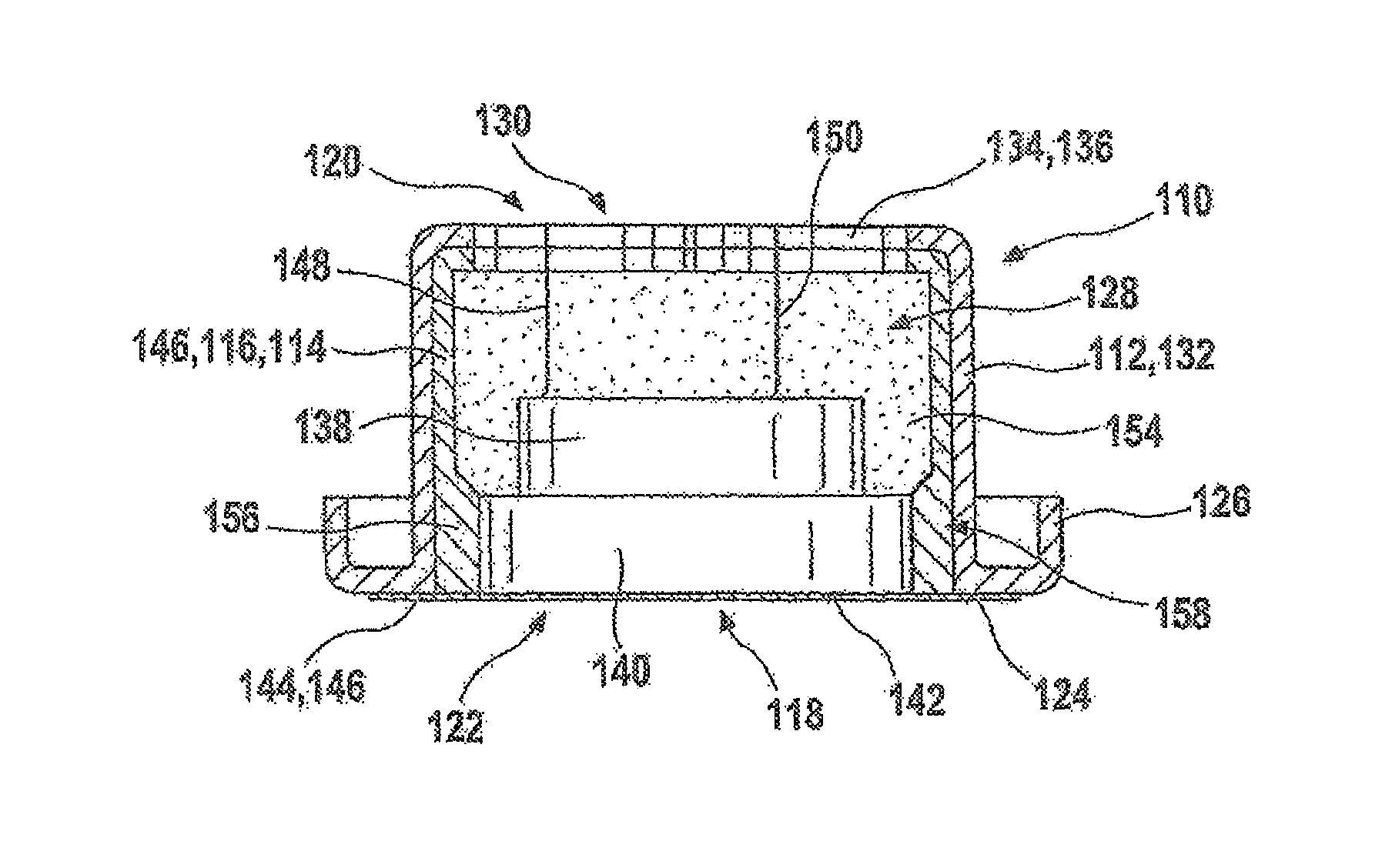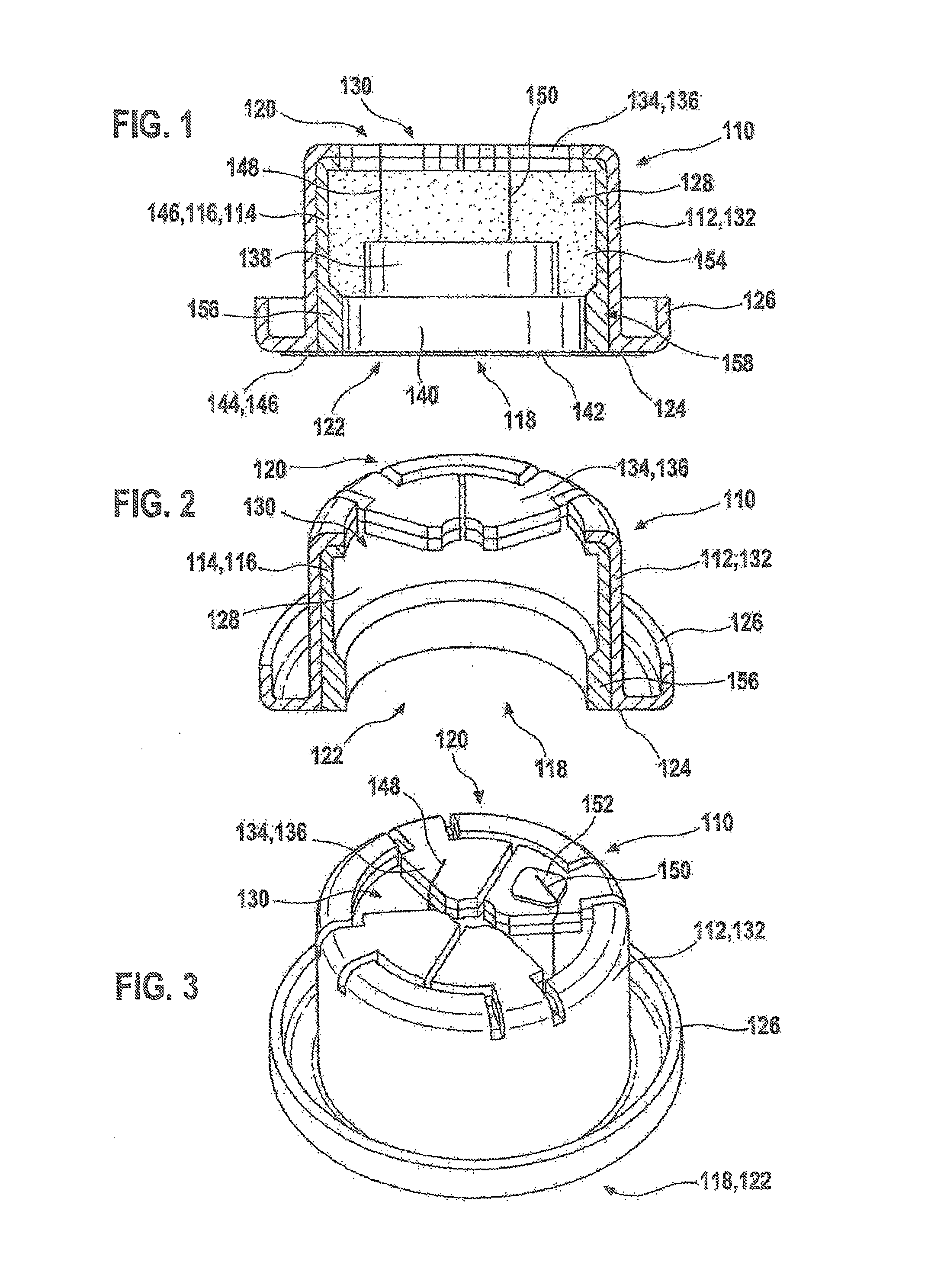Ultrasonic transducer for use in a fluid medium
a transducer and fluid medium technology, applied in the field of ultrasonic transducers, can solve the problems of inability to use the ultrasonic transducer for measurement, poor decoupling between the ultrasonic transducer and the surrounding housing or the disadvantage of the surrounding flow tube, etc., to achieve the effect of decoupling structure-borne noise, soft material, and stable position
- Summary
- Abstract
- Description
- Claims
- Application Information
AI Technical Summary
Benefits of technology
Problems solved by technology
Method used
Image
Examples
Embodiment Construction
[0028]In FIGS. 1 to 3, an exemplary embodiment is shown of an ultrasonic transducer 110 in various representations. FIG. 1 shows a sectional representation as seen from the side, and FIG. 3 shows a perspective view of ultrasonic transducer 110 in a view at an angle from above. FIG. 2 shows a housing 112 of the ultrasonic transducer having a decoupling element 114 in the form of a lining 116. Additional elements of ultrasonic transducer 110 according to FIG. 1 are not shown in FIG. 2 for the sake of simplicity. The ultrasonic transducer 110 has a front side 118 which points towards the fluid medium during the operation of the ultrasonic transducer 110. Furthermore, the ultrasonic transducer 110 has a back side 120, which will, as a rule, not be in contact with the fluid medium, such as air, during operation. Housing 112 is essentially designed to be cup-shaped, and has an opening 122 on front side 118, which is particularly recognizable in FIG. 2. This opening 122 is surrounded by an...
PUM
| Property | Measurement | Unit |
|---|---|---|
| thickness | aaaaa | aaaaa |
| pressures | aaaaa | aaaaa |
| pressures | aaaaa | aaaaa |
Abstract
Description
Claims
Application Information
 Login to View More
Login to View More - R&D
- Intellectual Property
- Life Sciences
- Materials
- Tech Scout
- Unparalleled Data Quality
- Higher Quality Content
- 60% Fewer Hallucinations
Browse by: Latest US Patents, China's latest patents, Technical Efficacy Thesaurus, Application Domain, Technology Topic, Popular Technical Reports.
© 2025 PatSnap. All rights reserved.Legal|Privacy policy|Modern Slavery Act Transparency Statement|Sitemap|About US| Contact US: help@patsnap.com


